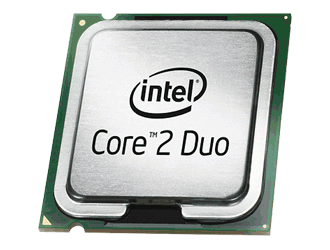The personal computing industry is a commodity market. In general, the fast turnover of technology allied with the unit volumes produced lends itself to minimal risk taking. The industry as a whole became what it is today through stardardization of design parameters, and a whole lexicon of acronyms allowed what was largely a domain for hobbyists to become components - compatible, interchangeable, standardized to the point where mass manufacture became viable.
The same commonality of design parameters which birthed the industry is also a driving ethos within product line evolution. Where incremental changes and imitation of an already successful design are low risk decisions, a profound change in design philosophy carries with it a greater possibility of financial uncertainty since increased research and development needs to translate into sales or brand elevation.
A profound change in design philosophy can also usher in a design icon.
What makes a product iconic? Design, functionality, styling, and innovation will get you part of the way there, but the true tests are how these products distinguished themselves from their competitors, how widely those traits were subsequently imitated by those competitors, and how history remembers their status.
Systems
IBM Personal Computer (Model 5150)
The IBM Personal Computer didn't invent the term PC, nor was it the first personal computer in production. Many computer kits from companies like MITS (Altair 8800), Sphere, and IMSAI had been available since the mid 1970's, while Apple, SWTPC, Hewlett-Packard, Tandy, Amiga, and Commodore were offering built systems.
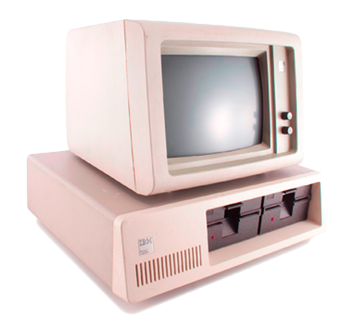
Project Chess, as the PC project was called, set in motion a chain of events that still dominate the PC industry today, including the choice of Intel's 8088 (x86) processor, Intel using AMD as second source to guarantee supply, and the choice of a little known programmer named Bill Gates to supply software. IBM's decision to accelerate time to market by outsourcing the components directly fueled the proliferation of personal computing via the PC clone industry.
The base configuration (4.77MHz 8088 CPU, 16kB RAM, 40kB ROM, single 160kB floppy drive, monochrome display) retailed for $1,595, comparable to the Apple II/II Plus systems. Adding all available options which included 256kB RAM and a 16-bit color CGA graphics card pushed the price to $6,000. IBM shipments totaled 50,000 during the first six months and 200,000 within a year.
Falcon Northwest Mach V
Boutique system builders have always had a love-hate relationship with enthusiasts. There is something of an unspoken rule that a true enthusiast will build their machine from a tailored list of components with bonus points awarded by peers for modding, yet boutique builders have inspired many enthusiast projects. Falcon Northwest's Mach V is one of the earliest and enduring of these systems.

By 1997, with competition from Alienware and VoodooPC, the Mach V had turned into an $8,500 behemoth sporting Diamond Viper 330 graphics for 2D/3D applications, a Quantum3D Obsidian 100 (Voodoo Graphics SLI) gaming graphics card, dual 4.5GB Seagate Cheetah 10K SCSI drives in RAID 0, and a $1,900 Pentium II 300 residing in an Asus 440LX chipset board.
Competition from Alienware (notably with the Predator chassis in 2003), Velocity Micro, OverdrivePC, and Puget Systems would reduce the Mach V's profile as the boutique market became ever more crowded and individual components became more accessible (and more reliable) to the home enthusiast.
Apple II
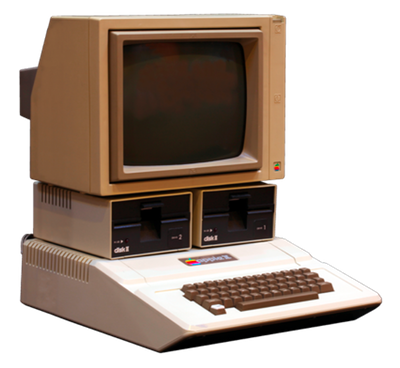
Wozniak's desire to rework 'Breakout', a game he and Jobs had designed for Atari, and to code games in color with additional sound, led to the initial tweaking of the Apple I's design. Markkula urged the inclusion of a floppy disc drive to aid business users in data and program storage. Markkula's vision allied with Wozniak's well-received implementation of the resulting external drive, and having the foresight to include many expansion options propelled sales in business orientated spreadsheet workloads. That spreadsheet program was VisiCalc and it bridged the gap between a mainframe computer and the relatively new desktop PC.
20,000 Apple IIs were shipped between the first deliveries in June 1977 and December 1978 and that number grew to over two million by the time the last iteration of the Apple II (the IIe) ceased production in December 1993.
IBM ThinkPad
Announced to the world in October 1992, the IBM ThinkPad range was first introduced a month later at COMDEX. Available as the 300 model with a 25MHz 386SL processor, 700, and 700C (25MHz 486SLC), the ThinkPad made a huge impact with reviewers and a user base that appreciated the power, usability, and design aesthetic which borrowed heavily from the simple and elegant Japanese black lacquered wood Shokado Bento lunch box.
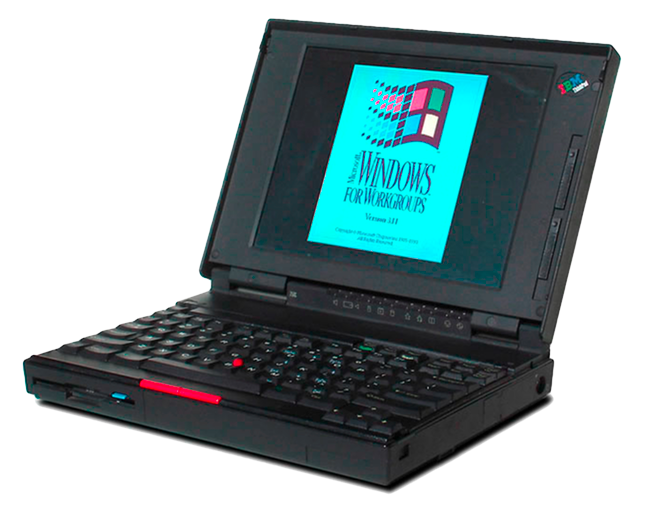
With its minimalistic all-black styling, recognizable red TrackPoint nub, gently concaved keys and commitment to performance and stability, the ThinkPad stayed true to its original concept and sold sixty million units via IBM and Lenovo over its first 18 years of existence – including 100 aboard the International Space Station.
Compaq Deskpro 386
By the end of 1984, IBM had a 40% market share of the personal computer space. Since the IBM PC was constructed entirely from third party sources, the hardware could be assembled relatively easily. What could not be obtained was the IBM BIOS ROM chip – the interface between the operating system and the hardware.
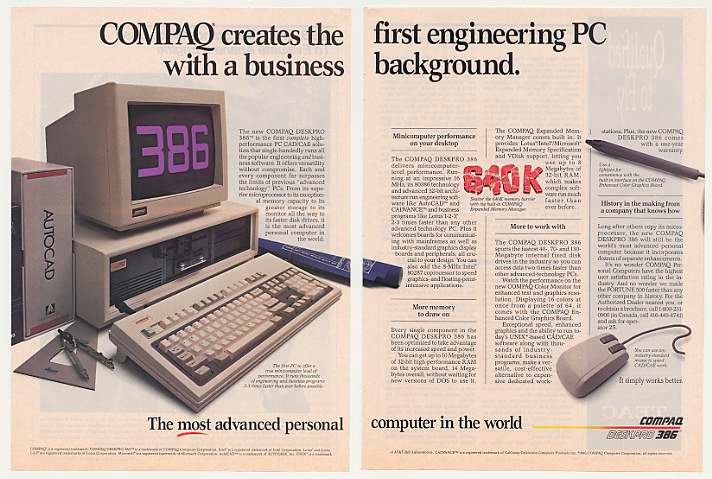
Compaq was the first company to achieve a reverse-engineered BIOS that was IBM PC compliant. The result was the Compaq Deskpro 386, the first sellable computer integrating Intel's 386DX CPU – a full seven months before IBM. Available with a 16 or 20MHz CPU and 40MB or 130MB hard drive, prices ranged from $6,449 to ~$9,000.
Borrowing from IBM's distribution model and offering competitive pricing, Compaq shipped its one-millionth PC within thirteen months. The company's success led to a flood of imitators and the clone industry would herald the emergence of Phoenix Technologies whose $25 BIOS chip fueld the expansion and commoditization of PCs and helped Microsoft replace IBM as the driving force in the industry.
CPUs
Intel 8086
The direct lineage of x86 computing starts with a processor that was intended to be a stopgap, a plan B for Intel's 32-bit successor to the 8-bit 8080 and 8085. The 8800 – later named iAPX 432 – proved too ambitious for the technology of the day. In 1976, Intel was in a three-way battle with Motorola and Zilog for control of the market, both of whom were forging ahead with 16-bit designs, and thus Intel handed Terry Opdendyk a ten-week deadline for a new 16-bit chip architecture.
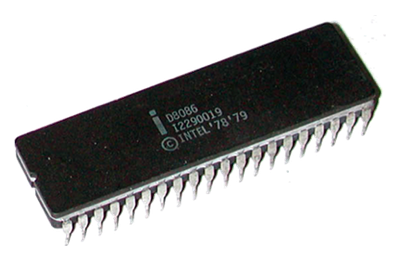
The result was the 8086, a 16-bit processor with 20-bit addressing in order to be able to access up to 1MB of RAM (up from 64KB for 8-bit processors), the price of which was beginning to fall considerably. Compatibility with previous 8-bit processor architecture would ensure that existing software could use the new architecture- an important consideration for a then small market.
The speedy development led to a less-than-elegant solution but also ensured that the Intel processor launched earlier than the Zilog Z80 and Motorola 68000. First to market meant contracts and the 4 to 10MHz 8086 would find a home at many of the first wave of 16-bit personal computers and word processors including Compaq's first Deskpro and IBM's Displaywriter as well as U.S. military and NASA systems.
Intel 8088
If the 8086 was the starting point for x86, the success of the architecture was ensured by a stripped down budget version of the processor. The 8086's price was a formidable obstacle in moving the personal computing market away from the largely 8-bit base. To offer an intermediate option for existing 8-bit hardware, Intel reduced the external data bus from 16-bit to 8-bit.
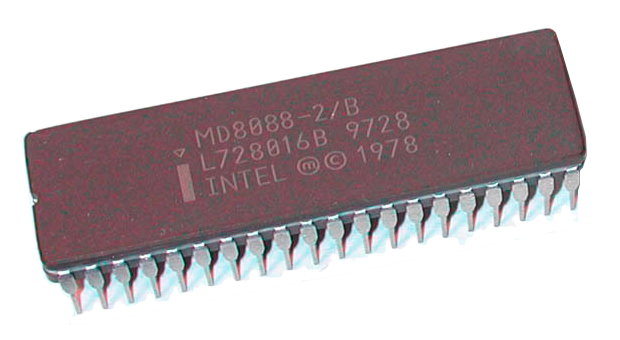
The resulting 8088 became the "good enough" cheaper option to the 8086 and its place in history was cemented when IBM turned to the Intel chip when their preferred option from Motorola failed to materialize for the IBM PC. This set in motion a turnaround of AMD's fortunes as the chipmaker. Struggling along as a second source for Zilog's Z8000, AMD was approached by IBM to act as a second source for the 8088 to ensure a steady supply and to act as regulators of each other's product quality. At IBM's insistence, Intel and AMD entered into a cross-license agreement and AMD's immediate future was assured by the 8088.
AMD Athlon "Thunderbird"
In late 1999, AMD and Intel were locked in battle for CPU clock speed supremacy. Intel had just launched the Coppermine Pentium III at 800MHz and the race to reach a one Gigahertz CPU was on. AMD won the race showing a Compaq system using a Kryotech SuperG chiller at the January 2000 CES show in Las Vegas and the first retail 1GHz clocked Athlon in March 2000.
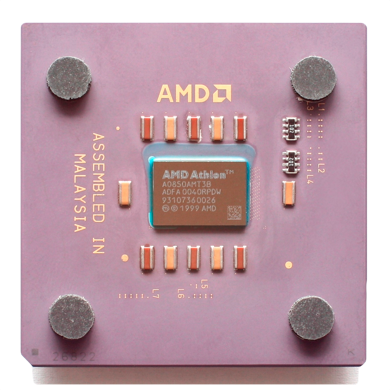
Neither AMD nor Intel would call it quits and the binning race continued unabated. AMD's Athlon "Thunderbird" was born into this clock speed battle. As with Intel's Coppermine PIII, Thunderbird moved the level 2 cache from the motherboard where it ran at 33-50% of the CPU clock to the CPU package itself (full speed L2) adding a good 10% performance over the earlier Argon, Orion, and Pluto Athlons.
The Thunderbird's arrival coincided with one of the most hectic release cycles in CPU history – 14 distinct product line launches in fourteen months. One byproduct of this accelerated cycle meant that the new product displaced the old and prices tumbled on CPUs only a few megahertz slower than the new arrivals.
Already prodigious stock performance and competitive pricing could be augmented by unlocking the CPU's frequency multiplier on locked CPUs via reconnecting the four L1 pins on the substrate side of the CPU package by using graphite from a pencil, and by raising the motherboard system bus frequency if the board allowed such. The Thunderbird proved to be an exceptional over (and under) clocker.
Intel Celeron 300A
Intel originally planned for its Celeron brand to be so stripped down in features that it wouldn't risk cannibalizing sales of its premium Pentium brand. To that end the Celeron 300A had a quarter of the Pentium II's level 2 cache, but whereas the Pentium's cache resided on the cartridge alongside the CPU and ran at half the CPU frequency, the Celeron 300A and 333's 128kB of L2 was on the CPU die itself – running at full speed and able to be cooled via the CPU heatsink.
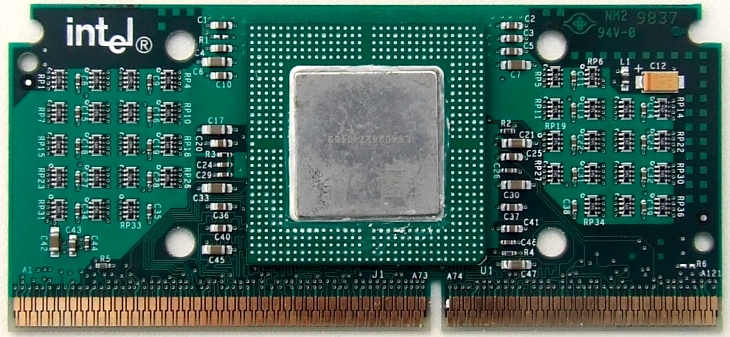
Intel locked the multiplier of the 300A and 333 at 4.5 and 5, respectively, but did not lock the frequency. As a result the 300A, a budget processor built to run at a 66MHz system bus (FSB) for a clock speed of 300MHz (66 x 4.5), could be installed on a motherboard that supported the higher 75, 83, and 100MHz FSB with the strong possibility of producing frequencies of 338, 375, and 450MHz. When running at these higher frequencies, the $180 Celeron 300A approximated the same level of performance capable from the $600+ Pentium II's of the same frequencies.
Intel Core 2 Duo E6600, E6300
It isn't entirely unknown for one hardware vendor to ambush another on a launch day. May 23, 2006 was supposed to be AMD's day with the debut of its AM2 socket featuring DDR2 support and the new "Windsor" Athlon 64 including the thousand-dollar FX-62. Samples of Intel's Core 2 Duo ended up in reviewers' hands two months ahead of launch. In the space of a day, AMD went from hopeful optimism to despair.
